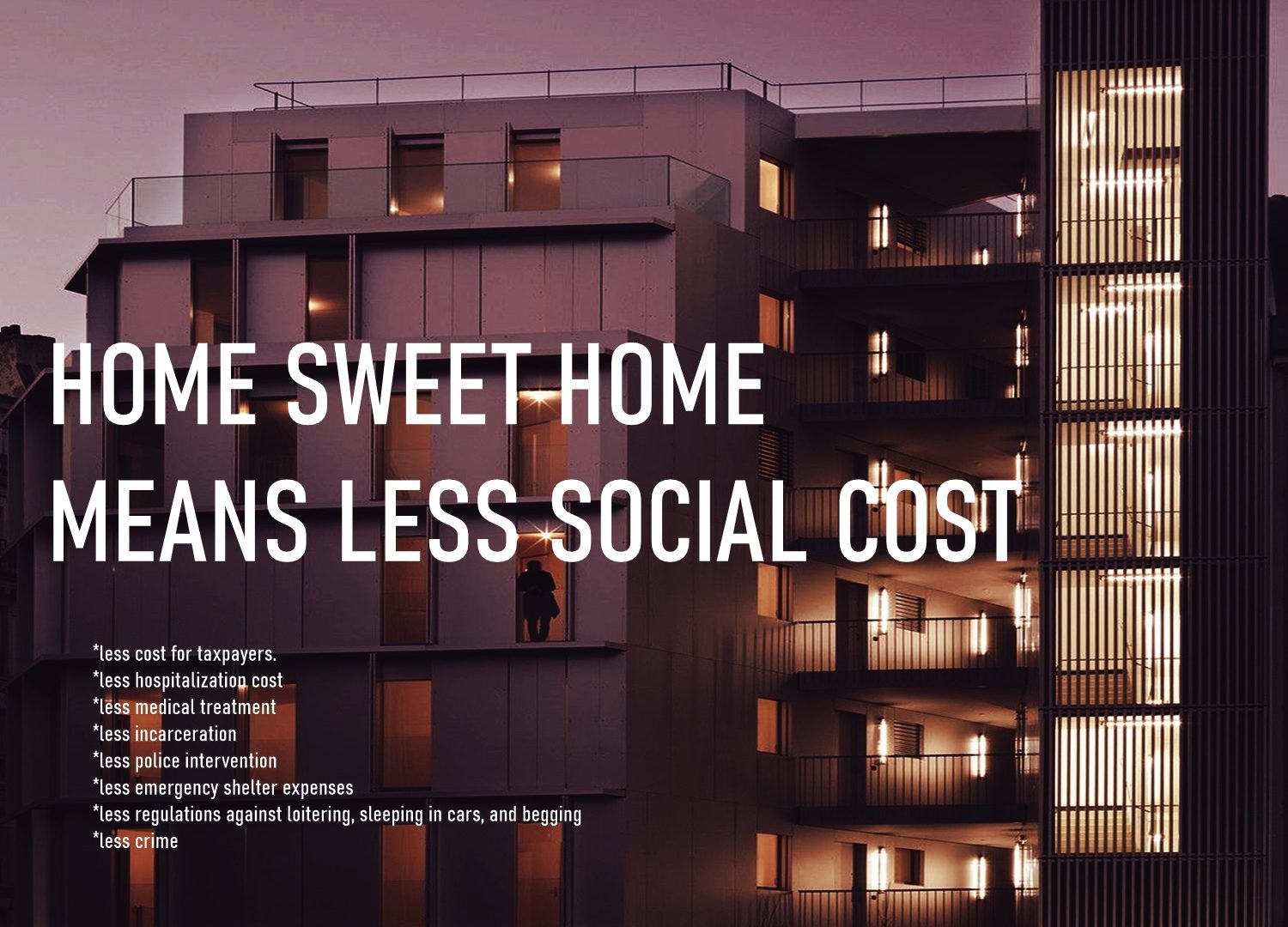
Attention investors, founders, real estate developers, construction contractors, governments, non-profit lets take on the f________ housing problems and also invest in Real Estate Technology (RETech). Do it for your state, province, country, world, social good and do it for reasonable healthy profit for the 99%.
Any one allocating funds, or just looking to raise funds should read this. When we begin to raise $10 – 40 Million USD in the face of uncertainty…we certainly would love investments in“prop-tech / real estate startups” also known as “Hard Assets”.
Real estate is a huge opportunity around the world when done right, Add to that the incorporation of web3.0 and also because we were curious to see if we can develop a good thesis to investing in new housing solutions and models. We dive a little deeper into Real Estate, Construction, and Housing Crisis and provided some tips below.
As always, we welcome credible investors, venture capitalist, angels, industry experts and founders’ thoughts or conversation. Please feel free to message us and if you need business services like complimenting your advisory team, solving business challenges or service based SMB marketing…..reach out to us bjmannyst.com via mbhvim.com.
Just cause the “R” word is being thrown around now on the news doesn’t mean there are no opportunities, great business ideas, awesome founders, great talents, money … there will always be resources. So don’t fear the “R”.
Let’s Begin…..
“A severe housing shortage in the US [Canada, Other Countries] and a large millennial population reaching peak home-buying age, combined with antiquated ways of buying and selling homes, are creating momentum for real estate-focused startups.”- Source PitchBook
“VCs and technologists lacked experience or relationships in the real estate community and workers were generally not technologically savvy. As technology continues to advance and consumers demand efficiencies and speed, world-class entrepreneurs are inevitably finding massive opportunities to enhance the physical world.” – Source Forbes
“ Proptech is a rather amorphous term that is formed from the words property and technology. It encompasses the various solutions that are involved in the growth of commercial real estate software.Proptech is also known as CREtech for commercial real estate technology or REtech for real estate technology. It usually refers to the software employed in real estate tools and applications.” – Source Unknown
[“We’ve had a time of a red-hot housing market all over the country,” Fed President Jerome Powell told …. “For the longer term what we need is supply and demand to get better aligned so that housing prices go up at a reasonable level…and people can afford houses again. We probably have to go through a correction to get back to that place. Powell’s prescription for what he referred to as a “difficult” housing correction has led to worries of another 2008-esque housing and financial collapse.] – Source WSJ
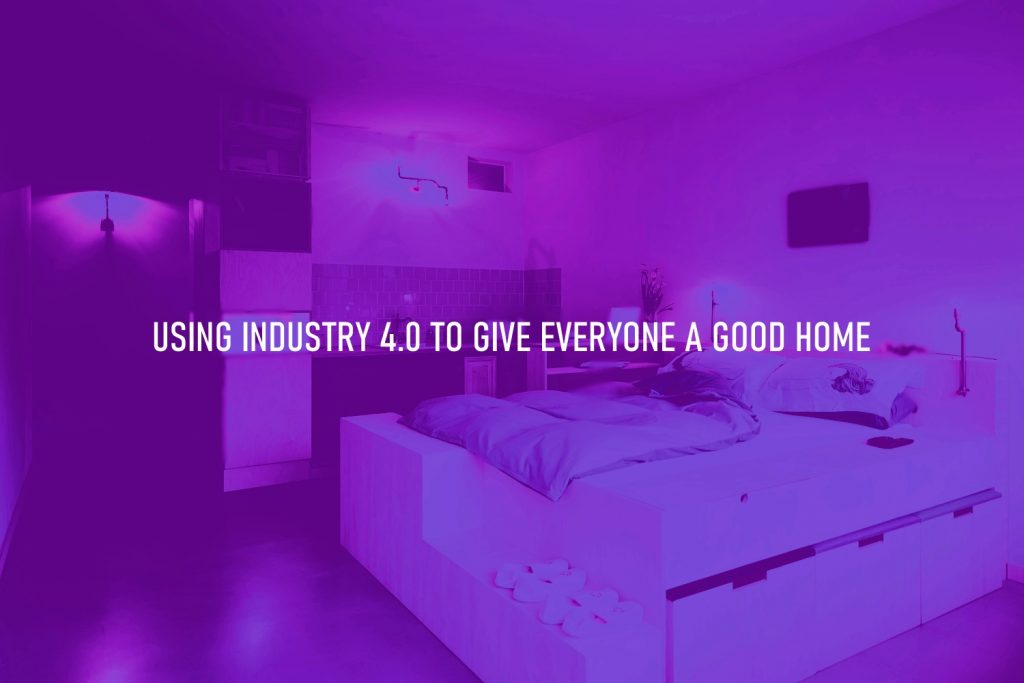
THE PROBLEMS & CONCERNS
“A recent survey revealed that of 200 cities polled around the globe, 90% were considered un-affordable when applying the widely-used standard of average house prices being more than three-times median income.” — Source WEF
“A growing share of renters — 56 percent — say the big reason they don’t own a home is because they can’t afford it, according to the National Association of Realtors”
- Not everyone can save the necessary down payment amount
- Many people of low and moderate incomes struggling to find inexpensive places to live
- Home prices continue to outpace wage growth
- Some lenders and landlord have collections and credit challenges
- Not many providers are able to work out a payment plans and a budget
- Some may be living in affordable housing under a government Housing and Urban Development’s but are left to access other services like transit that take hours
- Most of a homeowner’s wealth is tied up in the equity they have in their house. That can be a big problem when faced with retirement, a period of unemployment, large home improvement expenses, a medical crisis or possible divorce
- Many homeowners with fixed incomes and less than stellar credit can’t qualify for home equity line of credit (HELOC) or home equity loan
- Difficult conditions emerging in this housing market will lock younger people and more minority households out of home ownership and the opportunities at wealth-building
- “So rising interest rates and higher rental costs will certainly add more challenges and hurdles at a time when many of [middle age] are looking to own their first home.”
- Prospective homeowners became prospective renters, pushing prices even higher.
- Global supply of material and construction workers become competitive
- It takes much longer than usual to get new rental units built and ready
- No inter-generational wealth that could help with things like a down payment, the current landscape is more challenging for some
- Buying power for urban homes may likely continue to be out of reach if supply doesn’t increase
- Higher prices will still erode affordability and that could keep many frustrated and on the sidelines waiting or giving up on home ownership
- Inflation, rising interest rates, favoritism and corruption
- The low-middle income students are crowding into apartments a long ride away from campus.
- Without stable housing, students are shut off from being able to come to school consistently and experience campus life with peers because of the housing costs
- Due to housing inadequate supply, it is straining nearby neighborhoods, roads, social services and forcing longtime residents from their homes due to unaffortability
- There were students and individuals living in illegal subleases and garages, way too many sleeping in cars parked on the street, or couch-surfing.
- There are people becoming anti-social and behaving badly due to lack of a home.
- Some students can’t afford to live in safer neighborhoods
- Many more students are asking to live on campus now than ever because rents have roughly doubled outside
- The cost of driving has gone up, as well.
- Property owners don’t always receive tax credits if they use a percentage of their property as affordable housing
- Seniors and people with disabilities and vulnerable people are always in need of affordable housing
- People 65 or older, and those with disabilities studies show these numbers are increasing and will reach record levels in the next 20 to 30 years
- People most vulnerable in these groups need housing that is close to public accommodations and property modified to assist them in everyday living.
- More modification housing will include ramps instead of stairs, wheelchair accessible bathrooms, handrails, and modified cabinets and closets
- Adult students with families need private housing close to campus
- International students need housing that is available year-round because it is less expensive and more convenient than frequent international travel on holiday and summer breaks.
- Military service members need housing options on and off base.
- LBGTA need safe housing
- Recovering addicts, and those newly released from correctional facilities require forms of transitional housing.
- Some adults and children in state protective services and mental health programs require group homes and neighborhood-based housing.
- Housing discrimination still exist
- Historical inequities in home ownership and wealth-building.
- Housing affordability varies widely across the United States and other regions / countries
- Second, increasingly strict local government regulations have driven up the cost of building new homes in many large metro areas. Because of these regulations, housing supply has not kept pace with demand, leading to increasingly higher prices.
- One of the most common zoning laws that drives up housing costs is restricting the development of apartments.
- Some communities have banned apartments from being built in their neighborhoods
- Sometimes zoning initiative, like caps on building height, minimum lot sizes, and parking requirements, also increase the cost of housing.
- Complaint of the development process becoming increasingly long, complicated, and risky
- Sometimes federal policies also influence the cost of construction
- Construction materials such as lumber, steel and etc are subject to tariffs and trade policy
- Sometimes immigration policy affects the availability of workers
- When monetary policy by a nations federal banks calls for rate increase that affects availability of mortgage loans
- Lending guidelines set by financial institution affects some people
- Home ownership rates and overall wealth lean more to white households due to historic redlining due to some federal government’s practice of systematically denying mortgages to non-white applicants
- The housing crisis could impact 1.6 billion people by 2025, the World Bank says
- The world needs to build 96,000 new affordable homes every day to house the estimated 3 billion people who will need access to adequate housing by 2030, UN-Habitat says.
- ·Not addressing the housing as a basic human need proposal will cost government a lot more else where
- Most countries have seen housing costs grow faster than incomes, IMF says
- When the costs keeps going up and profit margins are slime for builders can make for less incentive industry. “They have less incentive to build more homes, “particularly lower-priced housing with lower margins,” Moody’s Analytics says.
- Demand has outstripped supply, according to research from financial services firm JP Morgan.
- Some say the global housing market has become too standardized and not adopting new ways or options
- Some say not being able to add or subtract walls in spaces so easily
- Many households need access to simple repairs or upgrades to their existing units.
- Some buildings will be around longer which means the need for structural and environmental talent or technology must be develop to address future problems
- Some people feel their own social and economic well being out ways the well being of the whole so they systematically deny others that same access
- In Turkey and likely in many other countries buying a home has become an exclusive dream
- Key factors that affect housing affordability beyond the direct costs of purchase and maintenance…location, property type, transportation infrastructure access, social service access, finance, laws, and economy.
- The boom, bubble, and bust of housing industry
- Possibility of lower revenues for property owners as cost, demographic, remote work and complexity increases
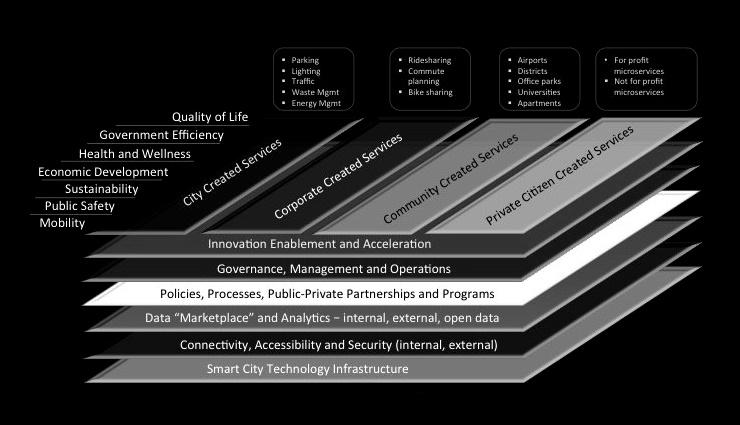
FUTURE PROBLEMS TO HOUSING
According to the World Economic Forum there are five big challenges that are likely to impact big cities today and into the future
As you can imagine about half the worlds population lives in urban parts of a nation. And it is projected that will rise to 68% by 2050. Meaning more people and more larger cities in dense areas, So there is an opportunity in housing for investors, founders, builders, engineers to help address the threats.
Environmental: Flooding, Drought, Extreme Cold, Extreme Heat, Poor Farming Lands, Trees, Pests, etc
Strained Infrastructure & Resources: Clean Water, Food, Clean Air, Energy, Reduced Green Spaces, Waste Management, Communication, more demand than supply, etc
Inequality: Lots of growing Have Plenty households, Lots of growing Have Little plus add to that the divide in political views, cultural values, work ethics, education, fairness, technology, industry 4.0…..which means government will see more intense social disruptions.
Technology: Driver-less Cars, Smart Cities, AR/VR, AI/ML, Blockchain, Automation, Data, IofT, Robots, Sensors, Smart Appliances, Security, etc will be used at larger scale which means a lot dependency on technology as well as hoping the use of technology creates fair system.
Governance: Cities fail and people fail when the governance system is awful, Consistent good governance is critical for everyone’s sense of stability in a more complex world. Rural and Urban governance should address issues of equity, livability, transit, affordability, laws and sustainability.
Our Addition. . .
Population: In addition to all that was mentioned above, the increase in city growth also means pressure on infrastructure and services
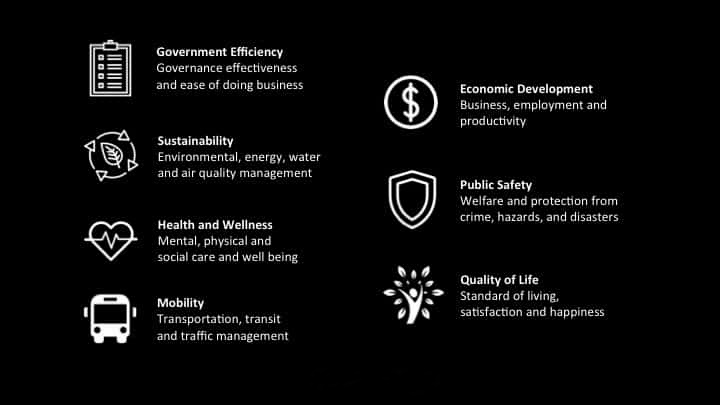
THE OPPORTUNITIES TO CONSIDER IN HOUSING
- Fewer printed materials (paper) and more digitization activities
- Reduced travel-related emissions
- Visiting sites through video camera and AR/VR interface
- Less energy consuming IT infrastructure or equipment
- Monitor and optimize the use of natural resources and equipment
- Better materials and building strategies
- Better processes
- Measuring, analysis and optimization tools that help landlords, brokers, property managers, contractors, pre-construction, construction, post-construction
- With many faced with uncertainty, more seek risk-averse investment vehicle
- Global RE investors have set their sights on America as more stable than others
- China, Europe, Middle East , etc are indicating social and economic disruptions
- Influx of money from foreign investors into the U.S. housing sector will increase
- Becoming lean and capital efficient
- Companies with staying power are attractive
- Evaluate the systems already in place, and begin to improve them
- Helping companies become efficient and revenue predictable
- Helping organization develop a proven track record and results
- Helping to realize the diversity of the housing sector and the many exit strategies available
- There is essentially a viable exit strategy for nearly every market cycle.
- Realize that capital for affordable housing consist of financing for the land acquisition, planning, development, consultation, rehabilitation and / or green retrofit of buildings
- It’s to you and everyone’s benefit to be able to live in a healthy community, equitable, accessible, safe and properly governed.
- Imagining a world where more skilled and unskilled people have jobs
- Getting parents and children in quality early care, personal development education
- Manufactured homes is known as an assembly like building process is proven to reduce the cost and time of construction by working within a controlled environment, allows for productivity regardless of the weather, and reduces the amount of physical labor.
- Reducing the amount and cost of plumbing, electrical assembly, HVAC, and other activities to construction
- [“Researchers at the Massachusetts Institute of Technology found that self-driving cars may reduce the amount of land used for highways, driveways, and garages, opening opportunities for more green space and home construction.]
- Create more multi-family buildings that allows older and younger people to aid each-other, lower cost, share some spaces and connect.
- Helping all stakeholders in real estate, banks, financial services, government, management, building construction improve risk predictions methods
- Finding new ways to capture personal character and creditworthiness
- Most recurring payments like cell phone bills, entertainment subscriptions, rent payments, utility bills, and etc. are not represented in the traditional credit bureau system
- Reducing the cost of loan administration for financial service companies. Loan administration is said to be costly. “Originating a loan, payment collection, title searching, and default servicing can add 100–150 basis points to the cost of a loan.”
- This one should be thought through carefully, – the lower the rent region, the lower the cost of building, and therefore gets a high cap rate, which gives multifamily investors an incentive to go into lower socio-economic areas, buy buildings and continue offering affordable housing. However the reality is those lower socio-economic areas usually have lower rents longer, income from the property may not be able to cover the maintenance cost.
- Helping families build and pass on inter-generational wealth
- Make a difference in the housing crisis and build several successful businesses.
- Did you know Venture capital investments in real estate technology companies hit $32 billion in year (2021), according to a report from the Center for Real Estate Technology & Innovation, narrowly beating out the previous annual record of $31.6 billion, set in 2019.
- An opportunity to provide financial education
- A great idea might be using advertisement and commercial partnership to fund housing construction and property management
- People want to live in beautiful spaces however many need help with the design and the remodeling process
- There’s an opportunity to be an expert on housing matters
- There’s a need to foster a sense of community in buildings, and neighborhoods
- Opportunity to provide technology advise to property owners
- Helping businesses reduce consumption of all non-renewable
- Reducing waste and inefficiency in raw material allocation and use
- Making all buildings net-zero carbon
- Helping to handle regulators, tenants, and investors
- Create more marketplaces for sellers and buyers
- Data, Valuation and Analytics
- Helping to use artificial intelligence and data science techniques in Real Estate
- Virtual viewing solutions will be in demand and virtual inspecting
- Using VR/AR/MR to explore a property or improve the collaboration process in a development project
- Improving managing a property and supervise the relationship between landlords and tenants
- Creating more flexible spaces within buildings
- Providing real estate agents with tools to assist them in their activity
- More better intuitive project management solutions
- More automated house buying and selling
- Emergence of bot real estate agents
- Helping buyers, sellers, and finance providers do better risk assessments
- Underused or redundant commercial and industrial buildings are ripe to be redeveloped into housing or mixed commercial and residential use
- Sometimes there are projects some residence don’t want in their area so they use delay tactics like appeals
- Providing insurance for closing and other legal services
- Investing in construction development projects
- Start a legal Real Estate investment group
- Learn and teach debt financing and equity financing
- Providing secure business communication tools
- Create fractional property ownership which is just owning a percentage in an asset
- Real Estate related Mobile Apps
- Internet of Things (IoT) for real estate and construction industry
- Smart devices and smart sensors
- As more information is made available online about a building better decisions can be made faster
- Aiding different Real Estate and construction professionals in lead generation
- Improving Multiple Listing Services (MLS)
- Incorporating In-app communication
- Helping others to leverage social media for business
- Advertising automation
- Robotic process automation
- Securing confidential file sharing
- Develop an AI-powered Virtual Assistant
- Surrounding area aerial photography
- Real estate innovations
- Showing booking tools
- Product management & design
- Property management platform
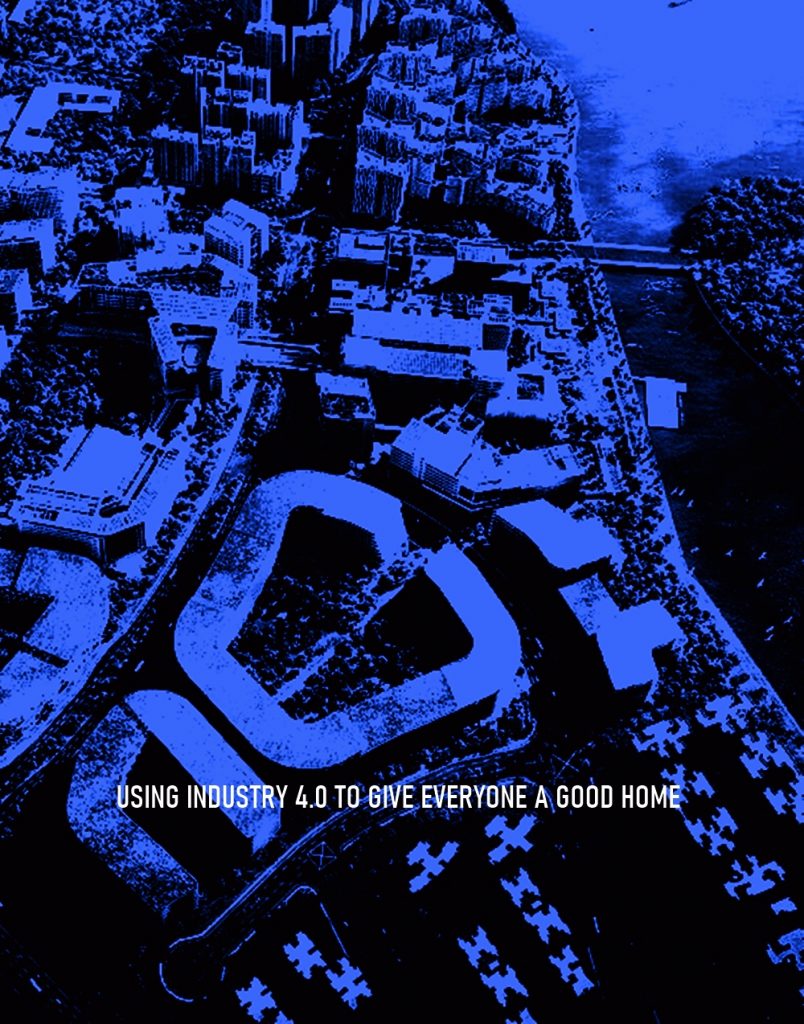
HOUSING SOLUTIONS & IDEAS
- With so many cash rich companies around the world wouldn’t it be a good investment idea for them to allocate more funds to housing, education, health care of diverse people?
- Offering several options for down payment and closing cost assistance via loan. One idea, until their home is sold, refinanced or paid in full that’s when you (lender) receive the repayment of loan. This helps to keep their monthly mortgage payment affordable
- improving equitable loan access to home ownership
- Providing a grant of up to _-___to reimburse pre-development and non-reoccurring closing costs associated with the construction of multi-family buildings
- Some have said the most direct way the federal government could relieve housing cost burdens on low-income households is by giving them subsidies
- Streamlining construction
- Turning recipients of affordable housing to a skilled worker
- Some have said higher wages have made the building jobs unprofitable but compliment with technology in some areas could reduce cost
- Worker shortage driving up wages for skilled labor which calls for a look at new ways to recruit and train
- Pipes, ducts, vents, and wire are still the only way to move water, air, and electricity around a home
- Wireless technology is reducing the amount of wiring time electricians have to spend in a new house
- Providing objective information about lenders, landlords, vendors, buildings, agents, managers, etc.
- Creating co-living legally by using existing single-family homes and apartments and subdividing them to accommodate more bedrooms, with shared common spaces and bathrooms
- Putting water, Internet, hydro, washers and dryers,and parking all in one fixed monthly payment.
- Maybe learning and improving on the co-op housing model
- Encouraging more affordable housing with tax credit be included in the portfolios of many property investors
- Reducing the costs involved in buying, renovating, and maintaining affordable housing
- Reducing taxes and insurance owners pay
- There are many single and two- to four-family homes that have been abandoned due to foreclosures which may also represent significant rehabilitation costs and turnaround time to resell.
- Work with a Realtor and learn about the local for sale by owner (FSBO) market
- Research the various financing alternatives available to investors
- Work with a local banker and a commercial mortgage broker or consultant to identify lender programs and find private investors.
- Join local home-builder, remodeling, and real estate investor associations
- Learn about affordable housing across the country and in your region
- Forge partnerships with like-minded investors and financing sources.
- Build a reputable brand
- Create jobs and employment opportunities for many by simply investing in affordable housing
- Having one person or a few people not own too many homes
- The question is whether few should own multiple “income properties,” which they rent to tenants so they can receive passive income.
- There might be a co- ownership with owners and renters when it comes to someone buying a second home as an investment. A fair system would compensate the tenants when the investment house is sold.
- Some say not encouraging investors to buy so many houses
- Under a new system idea, a tenant who gets evicted because the landlord wants to sell will be compensated.
- Learning from corporations like Apple, who has deployed more than $1 billion for affordable housing across the state, creating housing opportunities for thousands
- Adopting the smart city vision which may or may not help to create a vibrant and sustainable city for all.
- Cities, States. Provinces need to make a bold step to allow for more housing within suitable areas
- Help bring a higher level of control, predictability and scalability to multifamily development
- Looking into a way for individuals or organizations to develop a crowdfunding approach to assist future home buyers or retirement fund or government bond
- Helping renters improve their financial health and credit scores to improve chances to purchase a home
- Encouraging people of diverse backgrounds to spread out more, instead of constantly congregating near entertainment centers, jobs, industry, schools institutions, which requires better faster reliable affordable transportation
- Increase property tax rate for people that have more than three properties
- Review incentives and taxes for venture capitalists and private equity firm that build and buy housing as investment vehicles
- Review what happens when good desirable houses are held for investment purposes but most often are empty
- There needs to be policy change allocating urban land at lower cost while compensating the difference in other forms to the seller
- Resolving and reducing commute times from sub-urban to urban shorter
“Meanwhile Israel has deployed a scheme to boost its housing supply by letting residents sell additional development rights on their property in exchange for structural improvements (described as “upzoning an entire country”). Tokyo has mostly managed to keep homebuilding constant and home prices stable by relaxing restrictions on the construction of taller, denser structures.”

WHY ADDRESS THE HOUSING CRISIS & BENEFITS?
“Finland is the only EU member where homelessness has been declining, which this analysis attributes to an approach that prioritizes housing over other social support policies. “
Source – –
To the founders, leaders, government, mayors, and others, the root cause of a lot of city problems is due to people not having access to adequate-quality resources to live and prosper. Not sure if anyone has done the numbers between prevention of anti-social behaviors in cities versus dealing / policing destructive toxic behaviors in cities?
It is just unfair to have so much untapped potential human capital that are constantly worried about the roof over their heads. We bet that most people are willing to apply themselves if giving good housing.
The benefits for investing in solving housing problems is numerous, from:
- A great excellent vehicle for social giving and social return
- Providing housing to fellow man and fellow woman
- Giving all children good quality child care
- Giving others peace of mind to obtain a good education
- Through financing you put money to work and create jobs
- Reducing health care cost due to living in less stressful environment
- Attracting better transit options
- Reduce serious and petty crimes
- Reduces the appeal of criminal activity as a living
- Safety for all
- Good housing allows parents to work, save money and invest more resources in their children’s health and education
- Encouraging inclusiveness and more participation in the economy and social well being
- Making the world a better place for all to create a great life
- City and national pride
- More collaboration and constructive support
WHAT TO CONSIDER WHEN ENGAGING INVESTORS?
When raising funds or seeking advise. It’s better to have done your homework. If investors have to tell you the obvious downside to your idea, you may not be taking seriously. So here are some popular common questions you need a good answer to.
- Is there demand for the product?
- Does the demand span multiple geographies?
- Do you know how to sell into the industry
- Do you, the founder(s), know your customer and target?
- Is the market big enough?
- Are you a “nice to have” or a “need to have”?
- How will you expand your market size over time?
- Can the startup deliver a venture return and / or exit?
- Has the founder done his homework before his pitch?
- Do you know the VC’s previous investments?
- Do you know their preferences?
- Who is on your team?
- How do you ensure that investor capital is protected in a down market?
- How can the deal lose money?
- What was your worst deal and What did you learn from it?
- How is your company funded?
- How is your team incentivized?
- How much experience do you have?
- What Is your risk tolerance?
- What kind of assets will be addresses and / or purchased?
- Who/What will manage the investments?
- What will be done with The properties?
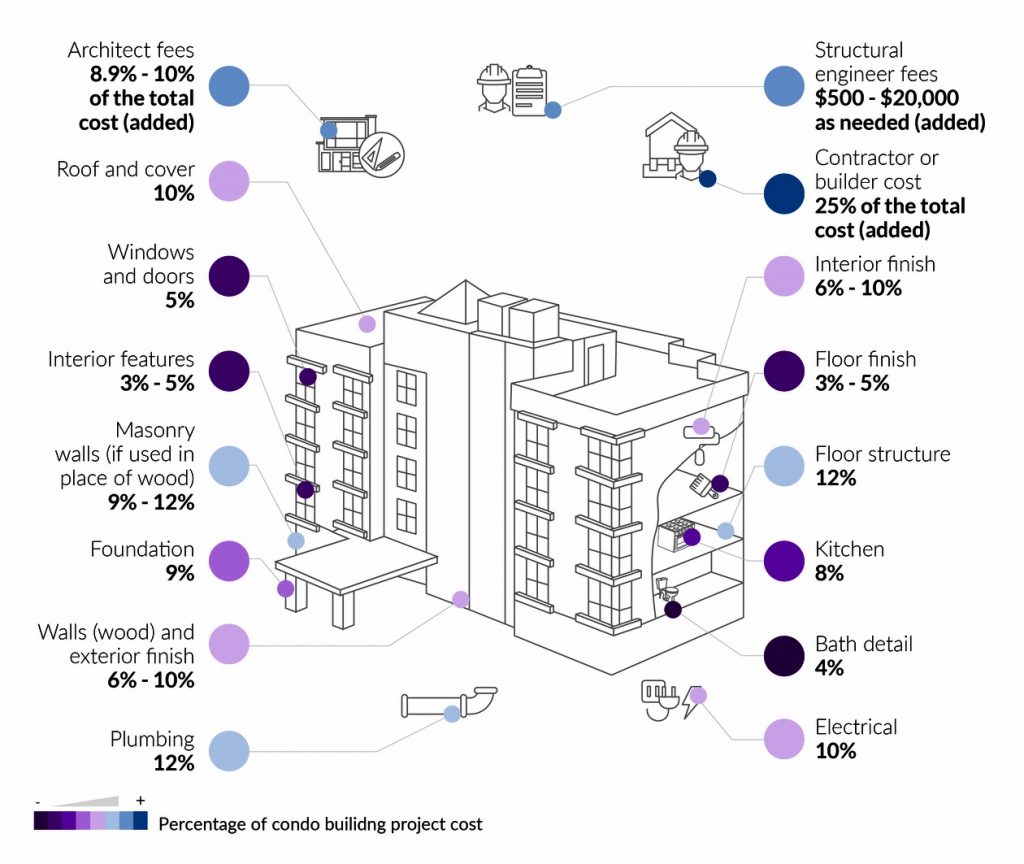
THE BASIC COST OF BUILDING CONSTRUCTION
- Land Acquisition
- Land Use
- Repurposing Vacant Property
- Financing
- Construction Productivity
- Design
- Construction Material
- Eligibility
- Tenure Systems
- Home ownership
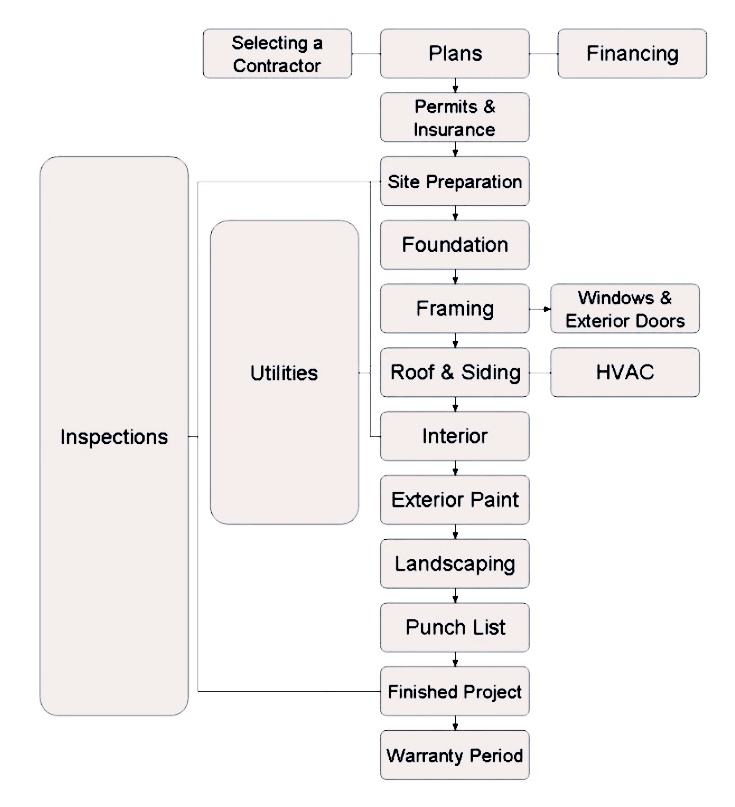
THE TYPICAL BUILDING CONSTRUCTION PROCESS SO YOU MIGHT FIND AN OPPORTUNITY
Market Research & Asset Criteria Steps
- What type of building?
- Who are prospective tenants?
- What’s the capitalization rate?
- What’s the monthly maintenance or upkeep budget?
- What’s the possible monthly rent payment?
- What’s the budget for potential renovations?
- Is there a need to work with a property management company?
- What’s the desired location, and how can it help in marketing?
- What’s the local economic trends?
- What’s the population growth rate trend?
- What’s job growth rate trend and what jobs are in good demand?
- Is availability of public transport and walk-ability important?
- Are there amenities in the area?
- Any confirmed demand from buyers and renters?
- Are there market drivers?
- Are there any indication of customer preferences?
- What are other real estate trends?
- Economic trends are favorable or not?
Pre-Construction Steps
- Acquisition of Land or Plot.
- Building Plan & Technical Drawing
- Estimation and Budgets.
- Building Permission from Authorities.
- Hire a Contractor.
- Building Construction Steps
- Site Cleaning or Leveling work
- Site Survey And Layout
- Excavation and PPC
- Foundation
- Plinth Beam
- Backfilling
- Superstructure
- Stair And Lift or Elevator
- Floor or Roof Slab
- Masonry Work
- The lintel above the door and Window Opening
- Electrical and Plumbing Conduits
- Door Window Frame Fixing
- Internal Plaster Work
- Parapet and Front Elevation work
- External Plaster work
- Roof Waterproofing and Finishing
- Internal Finishes
Post-Construction / Handoff Steps
- Final inspections & walk-through
- Defect management and Compliance reporting
- Hand-off & turnover to Owner
- General contractor should always offer continued support ongoing dialogue and assistance Handover of blueprints and operation manuals
- The GC may also offer training on building operations
- Seasonal testing & final review
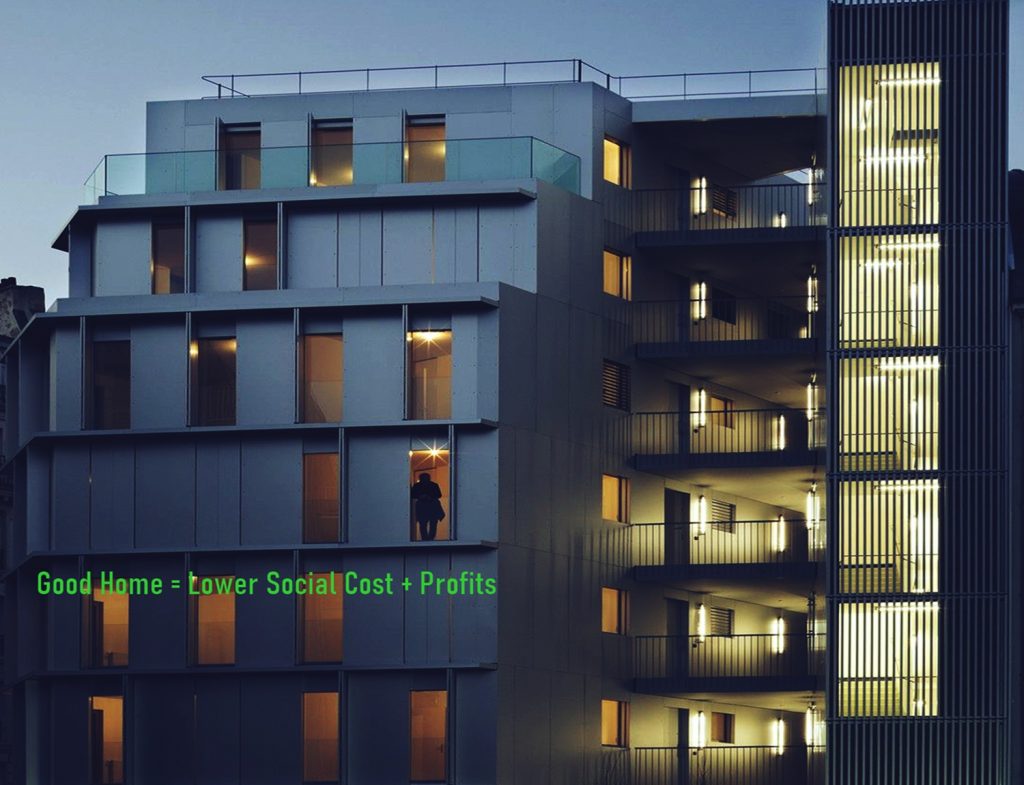
MORE OPPORTUNITIES IN PROPERTY MANAGEMENT SERVICES
Appliances
- Dishwasher Installation
- Dishwasher Repair
- Refrigerator Repair
- Washing Machine Repair
Basement
- Basement Remodeling
- Basement Stairs Installation
- Basement Waterproofing
- Egress Window Installation
Bathroom
- Bathroom Remodeling
- Ceramic Tile Shower Installation
- Hot Tub Installation
- Install Plumbing in a Bathroom Remodel
- Sauna Installation
- Shower Installation
Bedroom
- Bedroom Remodeling
- Murphy Bed Installation
- Room Painting
Disability Remodeling
- Disability Remodeling
- Elevator Installation
- Stairlift Installation
- Walk-in Tub Installation
Doors
- Front Door Installation
- Interior Door Installation
- Sliding Patio Door Installation
Electrical and Wiring
- Backup Generator Installation
- Electrical Wiring
- Electrical Work
- Hardwired Computer Network Installation
- Upgrading to Cat6 Cabling
- Flooring and Carpet
Flooring
- Carpet Installation
- Hardwood Flooring Installation
- Laminate Flooring Installation
- Tile Flooring Installation
- Vinyl Flooring Installation
Foundation
Concrete Foundation
French Drain Installation
House Lifting
Home Additions
- Bathroom Addition
- Drafting Services
- New Space Addition
- Home Automation
- Smart Lock Installation Automation
- Smart Thermostat Installation Automation
- Home Office
- Home Conference Room
- Hardwired Computer Network
- Wireless Computer Network
HVAC
- Annual Air Conditioner Maintenance
- Bathroom Fan Installation
- Ceiling Fan Installation
- Ductwork Installation
- Gas Fireplace Installation
- Oil Furnace Installation
- Propane Furnace Installation
Insulation
- Attic Insulation
- Basement Waterproofing
- French Drain Installation
- Home Insulation
Kitchen
- Cabinets Installation
- Ceramic Tile Backsplash Installation
- Garbage Disposal Installation
- Kitchen Countertops Installation
- Kitchen Remodeling
- Range Hood Installation
Laundry Room
- Dryer Repair
- Laundry Room Remodeling
- Washing Machine Repair
Living Room
- Built-in Entertainment Center
- Chimney Installation
- Fireplace Installation
- Living Room Remodeling
- TV Repair
Security and Protection
- Fire Protection
- Home Security System
- Smoke Detector Installation
- Video Surveillance Cameras Installation
Staircases and Elevators
- Elevator Installation
- Paint Stairway
- Stairlift Installation
Walls
- Brick Tuckpointing
- Drywall Installation
- Drywall Repair
- Wall Mural Painting
- Wall Removal
Windows
- Blinds Installation
- Egress Window Installation
- Skylight Installation
- Window Glass Replacement
- Window Replacement

DIGITIZING THE CONSTRUCTION & REAL ESTATE INDUSTRY
***Note the source of this section insights was originally written & provided by McKinsey & Company. Thank you for sharing.***
“The McKinsey Global Institute estimates that the world will need to spend $57 trillion on infrastructure by 2030 to keep up with global GDP growth. This is a massive incentive for players in the construction industry to identify solutions to transform productivity and project delivery through new technologies and improved practices.” – Source McKinsey
These are some ideas McKinsey & Company (big consulting firm) suggests:
Higher-definition surveying and geolocation
[ Geological surprises are a major reason that projects are delayed and go over budget. Discrepancies between ground conditions and early survey estimates can require costly last-minute changes to project scope and design. New techniques that integrate high-definition photography, 3-D laser scanning, and geographic information systems, enabled by recent improvements in drone and unmanned-aerial-vehicle (UAV) technology, can dramatically improve accuracy and speed. ]
[Used in conjunction with ground-penetrating radar, magnetometers, and other equipment, lidar can generate above-ground and underground 3-D images of project sites. This is particularly important in dense, environmentally sensitive, or historical project sites, where disturbance needs to be minimized.]
[These advanced survey techniques are complemented by geographic information systems that allow maps, images, distance measurements, and GPS positions to be overlaid. This information can then be uploaded to other analytical and visualization systems for use in project planning and construction.]
Next-generation 5-D building information modeling
[The construction industry, however, has yet to adopt an integrated platform that spans project planning, design, construction, operations, and maintenance. Instead, the industry still relies on bespoke software tools. In addition, project owners and contractors often use different platforms that do not sync with one another. As a result, there is no single source that provides an integrated, real-time view of project design, cost, and schedule.]
[ Next-generation 5-D BIM is a five-dimensional representation of the physical and functional characteristics of any project. It considers a project’s cost and schedule in addition to the standard spatial design parameters in 3-D. It also includes such details such as geometry, specifications, aesthetics, thermal, and acoustic properties. A 5-D BIM platform allows owners and contractors to identify, analyze, and record the impact of changes on project costs and scheduling. The visual and intuitive nature of 5-D BIM gives contractors a better chance to identify risks earlier and thus to make better decisions. For example, project planners can visualize and estimate the impact of a proposed change in design on project costs and schedule. ]
Digital collaboration and mobility
[ Process digitization means moving away from paper and toward online, real-time sharing of information to ensure transparency and collaboration, timely progress and risk assessment, quality control, and, eventually, better and more reliable outcomes.
One reason for the industry’s poor productivity record is that it still relies mainly on paper to manage its processes and deliverables such as blueprints, design drawings, procurement and supply-chain orders, equipment logs, daily progress reports, and punch lists. ]
[ Due to the lack of digitization, information sharing is delayed and may not be universal. Owners and contractors therefore often work from different versions of reality. The use of paper makes it difficult to capture and analyze data; that matters because in procurement and contracting, historical performance analytics can lead to better outcomes and risk management. Mismanaged paper trails also routinely spur disagreements between owners and contractors on such matters as construction progress, change orders, and claims management. Finally, paper trails simply take more time. ]
The Internet of Things and advanced analytics
[ By measures such as the number of people, the profusion of construction equipment, and the amount of work going on at the same time, project sites are getting denser. They now generate vast amounts of data, a majority of which is not even captured, let alone measured and processed. ]
[ The Internet of Things is a reality in many other sectors; sensors and wireless technologies enable equipment and assets to become “intelligent” by connecting them with one another. On a construction site, the Internet of Things would allow construction machinery, equipment, materials, structures, and even formwork to “talk” to a central data platform to capture critical performance parameters. Sensors, near-field-communication (NFC) devices, and other technologies can help monitor productivity and reliability of both staff and assets. There are several potential uses:
- Equipment monitoring and repair. Advanced sensors can enable machinery to detect and communicate maintenance requirements, send automated alerts for preventive maintenance, and compile usage and maintenance data.
- Inventory management and ordering. Connected systems can forecast and alert site managers when stocks are running short and when orders need to be made. NFC tagging and tracking of materials can also pinpoint their location and movement and help reconcile physical and electronic inventory.
- Quality assessment. “Smart structures” that use vibration sensors to test the strength and reliability of a structure during the construction stage can detect deficiencies and then correct them early.
- Energy efficiency. Sensors that monitor ambient conditions and fuel consumption for assets and equipment can foster on-site energy efficiency.
- Safety. Wearable bands can send alerts if drivers and operators are falling asleep or if a vehicle or asset is stationary or nonoperational for a given window of time during shift hours.
Future-proof design and construction
[ New building materials, such as self-healing concrete, aerogels, and nanomaterials, as well as innovative construction approaches, such as 3-D printing and preassembled modules, can lower costs and speed up construction while improving quality and safety.]
[ Building materials represent a $1 trillion global industry; materials usually account for more than half the total cost of projects. Traditional materials such as concrete, cement, and asphalt make up most of this demand. But new and better construction materials are also required due to several trends:
- Green construction. There is an immense push to adopt materials and technologies with lower carbon footprints.
- Cost efficiency. Given substantial cost pressures, there is a need for structural change in the choice of materials, in addition to incremental lean efforts.
- Supply-chain agility. Transporting heavy materials and equipment has massive implications on supply-chain costs and time, especially because many new projects are located in remote or dense areas.
- Improved durability and strength. With capital costs rising and land growing scarce in many markets, owners are insisting that projects have longer commercial lives.
- Off-site construction. Assembling lighter, easier-to-handle materials off-site can improve project efficiency, address on-site space constraints, and create the conditions for crews to improve their skills.
- Self-healing concrete. This uses bacteria as a healing agent to close cracks on concrete; it is currently at the proof-of-concept stage.
- Concrete canvas. Take a layer of “concrete cloth,” then add water and allow to set. This innovation typically is used for drains, channels, and passages, and it is now available commercially.
- Topmix permeable. This is a cement alternative that can absorb 4,000 liters of water a minute. It is in the early-adoption stage.
- Aerogel. This supertransparent, super-insulating material is 99.98 percent air; it is available commercially.
- Nanomaterials. These superstrong, ultralightweight materials may eventually be a substitute for steel reinforcement in structures and foundations, though they are still in the research stage.
In Addition. . .
[ The industry needs to move beyond precasting and prefabricating structures to the next generation of techniques. Several techniques show potential:
- Preassembly. Relatively simple structures, such as factories and covered yards, can use in-factory or in-yard assembly for a complete building envelope. This technique can also be adapted for modular buildings, such as hotels and budget condominiums. Complete submodules of a larger building are put together in a factory or nearby yard before final assembly at the construction site.
- Techniques such as prefabricated, prefinished volumetric construction (PPVC) integrate off-site capabilities to transform the construction site into a manufacturing system. The result: greater efficiency, less waste, and improved safety. In addition, materials such as cross-laminated timber (CLT) are emerging in response to the need for greener construction options. In the United Kingdom, an 80-story timber skyscraper recently received preliminary approval.
- 3-D printing. Printing submodules or complete concrete structures before assembly and internal work could transform the industry with respect to design, cost, and time. However, 3-D printing is still in the early stages of its development and cannot yet be deployed at the scale and speed required for large projects.
- Robot-assembled construction. Construction projects are inherently unstructured and often unpredictable; they can also be sited in difficult terrains and environments. For these reasons, the use of robots has been limited so far. However, robots are now being selectively used for repetitive and predictable activities, such as tiling, bricklaying, welding and spool fabrication, demolition, and concrete recycling.
- Transparency and risk sharing in contracts. Habits are tough to change, and one habit is to see contracts as adversarial opportunities to hand off risks. Instead, contracts need to be seen as tools that allow fair sharing of risks and rewards and that help both sides succeed. This will happen if contracts clearly outline responsibilities and allow owners and contractors to share equitably the benefits that arise from the adoption of technological and process innovations.
- Return-on-investment orientation. Measuring and communicating how new technology will improve construction.
- Simplicity and intuitiveness in the design of new solutions. At the front end, user interfaces need to be “foreman friendly” to encourage usage. At the back end, building in compatibility with existing enterprise solutions mitigates the need to spend more on upgrading existing platforms.
- Change management. To move away from business as usual, organizations need a clear change story; top management needs to communicate why these changes are important and what that means for organizational structure, capabilities, and resourcing. Organizations that do not invest in change management will face the same resistance encountered during previous waves of technology deployment and are more likely to fail.

MBHVIM TEAM FINAL WORDS ABOUT THE HOUSING CRISIS & SOLUTIONS
In our final thoughts, we would hope many founders, investors, and others can see the seriousness of this crisis and the opportunities it presents. There are many ways to gain wealth through real estate as well as do some less greed based social good.
If we haves and have plenty don’t address it today, it will become harder to enjoy our riches.
Government, associations, regulators, companies, individuals can invest, educate, advice and / or create constructive incentives & policies.
When it comes to our potential investment thesis, it would be based around companies using industry 4.0 technology, good community layouts, and manufacturing principles to produce quality-smart mix use buildings faster.
Reach out if you are interested in further discussion and willing to do something.

